Scotland was once a country of 3000 castles; today, 1100 remain. North and a “wee bit” west of Edinburgh is Drummond Castle. John Stewart, the first Lord Drummond, built a fortified tower, the castle’s beginnings, in the late 15th century. There has been gardening at Drummond since 1508 when homegrown cherries were sent to King James IV. Can you imagine your family making an over 500-year commitment to a garden? Yet that is the story of Drummond Castle Gardens, interrupted by political and religious wars, it remains a family estate.
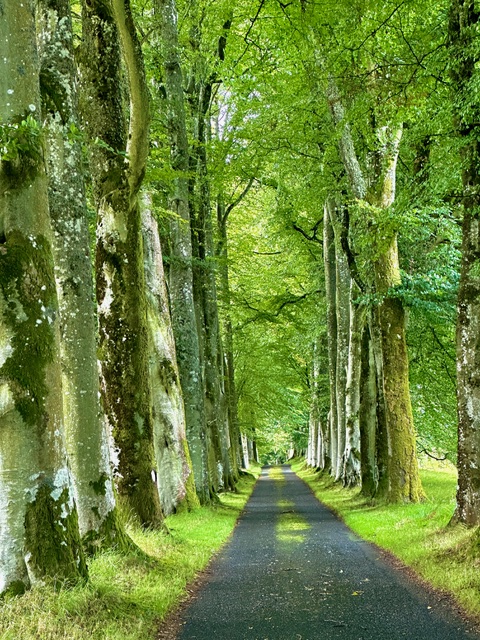
As we turned off Scotland’s motorway A822 onto the narrow drive to Drummond Castle, we entered an allée of beech trees. In this magical place trees create a green canopy over the road. This green world of wood goes on for over a mile, leading to Drummond Castle. These are not random placements. It was a deliberate design of majestic trees, a feature hundreds of years old. The idea for the tree-lined road was by the fourth Earl of Drummond, who ordered the first trees planted in the 17th century.
As the tunnel of green ended, we found our way through an arched opening in the castle boundary wall leading to the terrace. My first impression of the formal Drummond Gardens – is breathtaking.
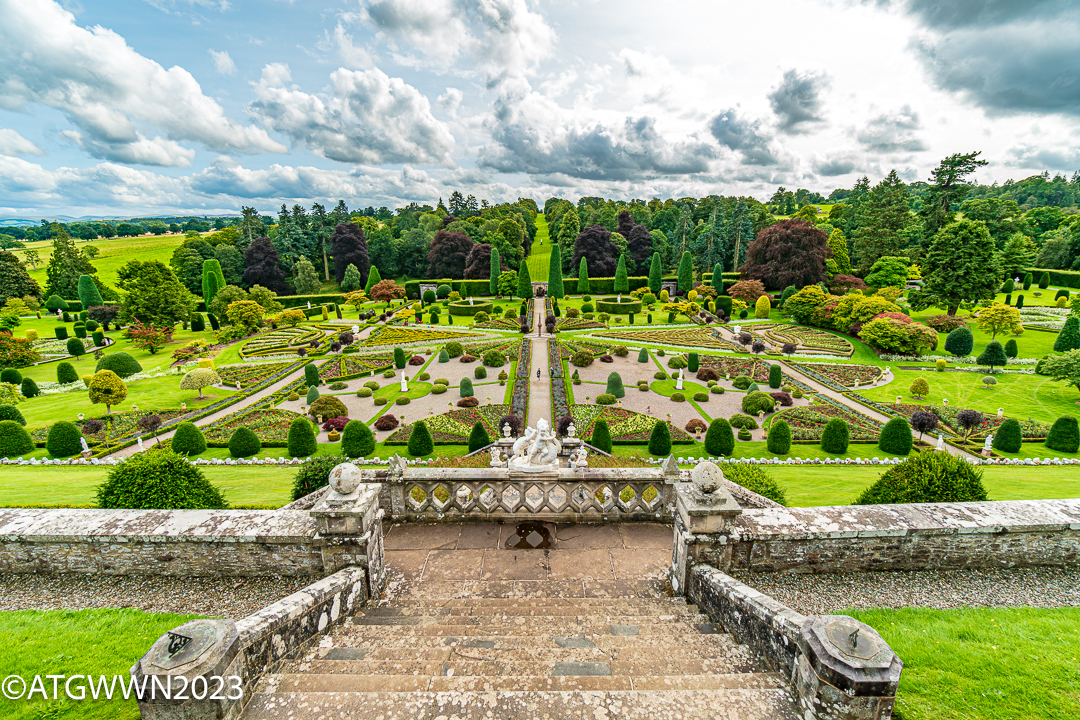
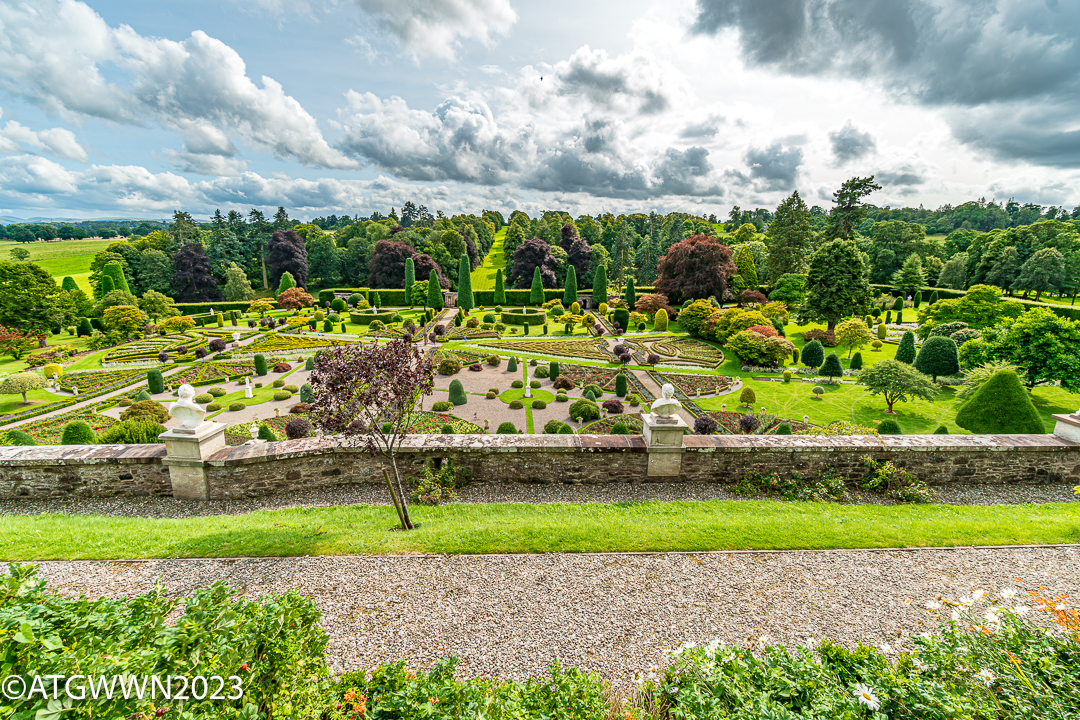
The entry terrace towers 60 feet above the formal, symmetrical garden spreading over nine acres. Though gardening has been a feature of the castle since its beginning, the current design of terracing and parterres was done in the late 18th century.
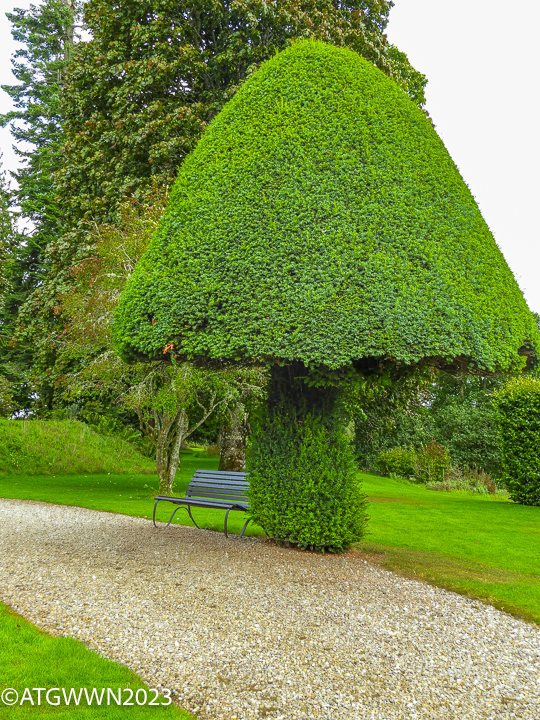
It was fashionable for trees and shrubs to be clipped into balls, triangles, and rectangles. Low boxwood hedges outline beds laid out in geometric shapes and fancy scrolls. Scotland’s flag is a field of blue with a white St Andrew’s cross. The design repeats the X-shaped lawn pathways intersecting with a unique and distinctive sundial built in 1630 marking the center.
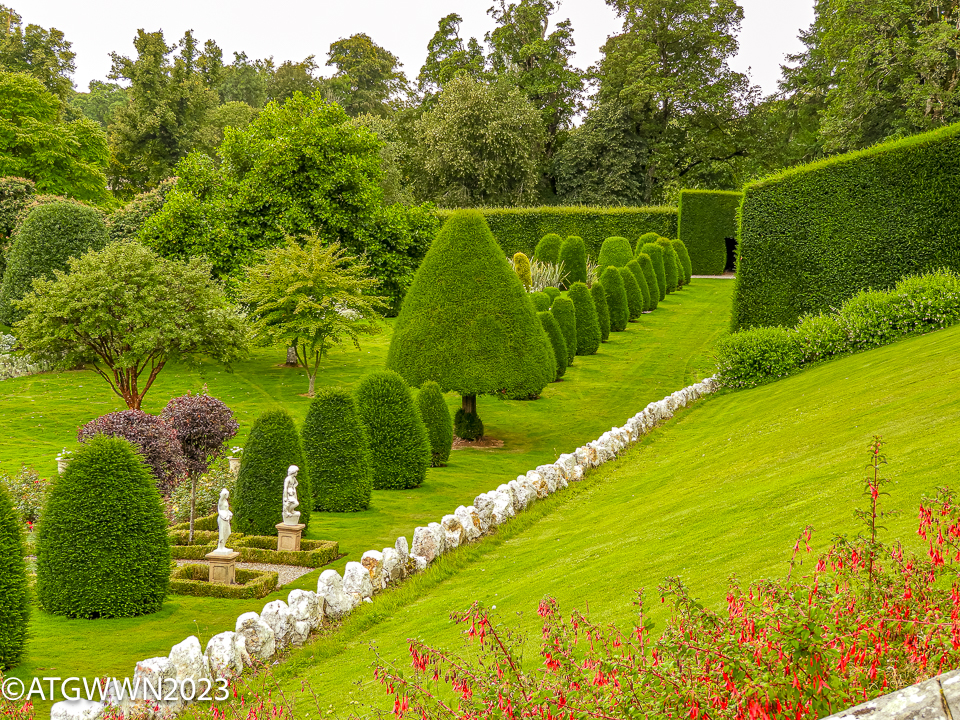
Trees of all kinds, fir, yew, sequoia, deciduous beech, cherry, plum, oak, birch, and acers, (Japanese maples) in various colors, shapes, and sizes punctuate the garden. The boxwood hedges measure 11 miles in pruning length and are grown in elaborate patterns. Blue lavender blooms and silvery lambs’ ears represent the flag’s colors. Today, fanciful topiary and the occasional peacock surprise you as you walk the lawn pathways. Each turn provides a different view of the castle high above. Sculptures of notables and mythical heroes of earlier times decorate the grounds.
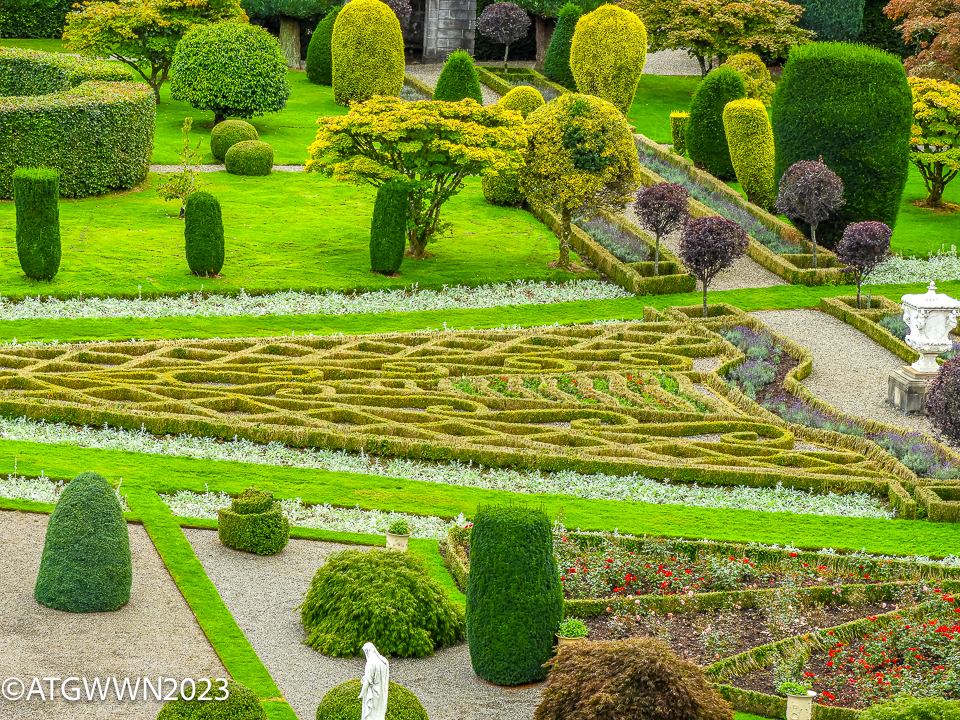
Queen Victoria and Prince Albert visited in 1842. She wrote of her visit in her diary, “We walked in the garden which is really very fine with terraces like an old French garden.” The garden today is still “very fine” and to see it from above is an unforgettable experience, but then to descend the steep staircases into the garden and walk about is equally impressive.
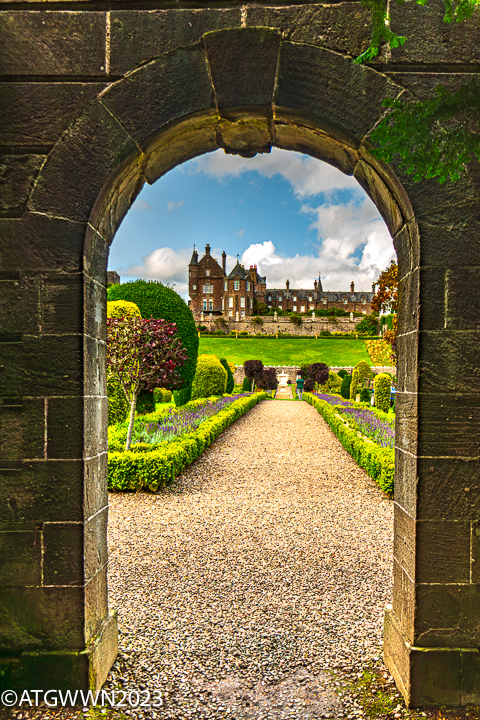
There is a small opening in the far side of the garden that opens to the kitchen garden and apple orchard with heritage varieties of “Golden Hornet, Hawthorne, Newton Wonder, Peasgood Nonsuch” and “Bloody Ploughman” and many more, names quite unlike our Gala, & Honey Crisp of today. Glass Houses, a potting shed, a cutting garden, and cold frames for extending the growing season are filled with more plants. Rhubarb, artichokes, and berry bushes grow in designated beds.
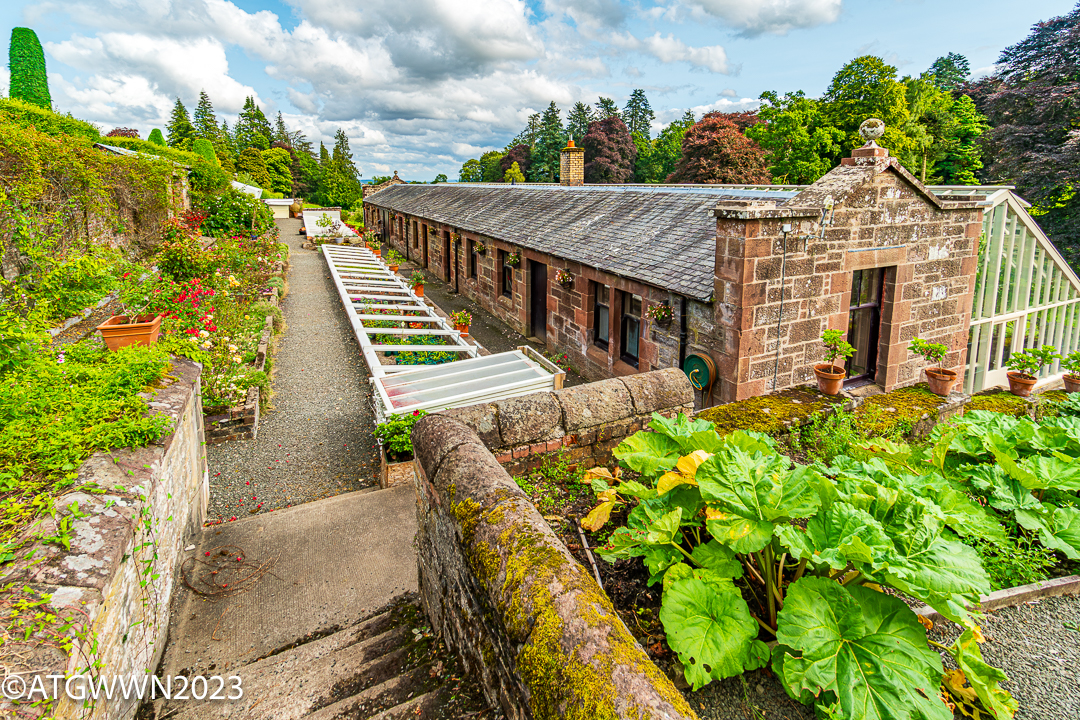
The head gardener today is Edith Barnes, who arrived at Drummond at six months of age when her father took the position of Head Game Keeper in 1966. She grew up playing in the garden and then working in the garden, and today cares for it as her own. Assisted by a dozen under gardeners, apprentices, and a few robotic lawnmowers, they work to keep the garden planted, trimmed, harvested, and fed.
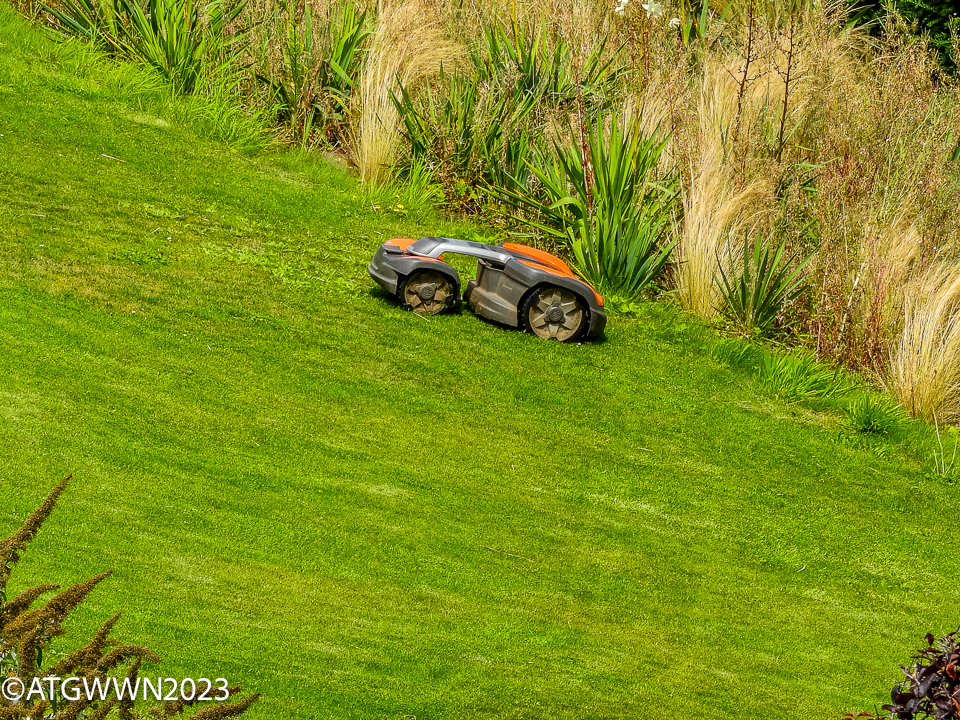
We wandered the garden for hours, going from side to side, discovering mushroom topiaries, holly trees, and a stone bridge over the lake. Drummond Gardens is a pleasure garden combining the styles of Italian terraces and statuary with French parterres on the flat ground. 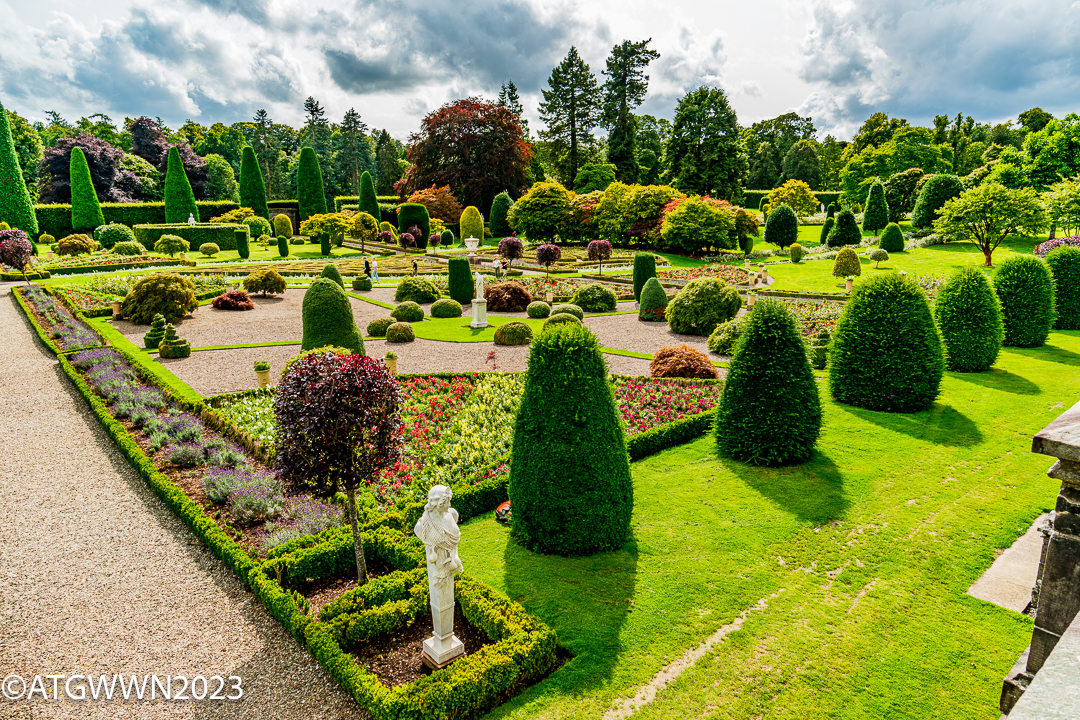 It is a garden designed for strolling and admiring beauty. In The Victorian Gardener, it describes the value of the pleasure garden as:
It is a garden designed for strolling and admiring beauty. In The Victorian Gardener, it describes the value of the pleasure garden as:
“Simply walking in a garden could be considered pleasant and interesting exercise, particularly for ladies. Considering that their clothes may well have weighed about thirty-seven pounds (today ours are typically two pounds), it may be imagined that getting round a garden of any size could be considered the Victorian version of “working out” in itself.”
We had our workout, and we never stopped being amazed at the vastness of the design.
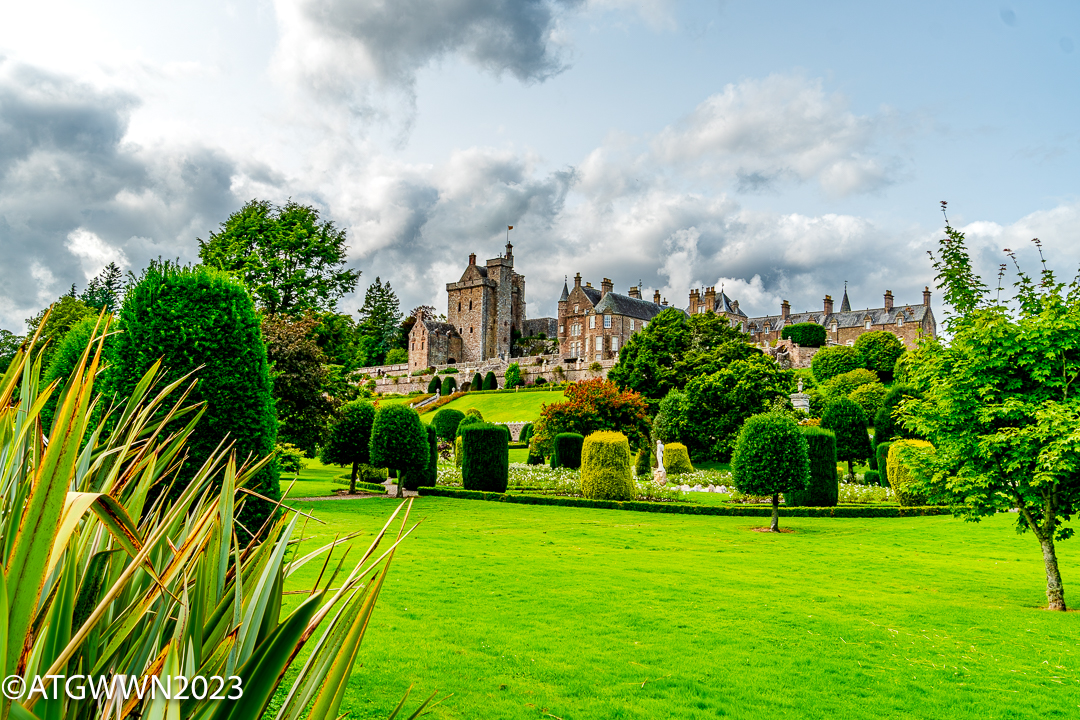
The estate encompasses 60,000 acres. Drummond is a significant garden, compared by some to Versailles. If you are curious, the Drummond Castle Website offers drone footage of the gardens; it’s worth a look. It might just make you want to visit Drummond Castle Gardens in person.
As you check the time on your “device,” consider
The Sundial
The Drummond Sundial was built in 1630 by John Drummond with Perth-born master mason John Mylne. John Drummond had extensive education in mathematics and was deeply involved in the sundial’s design.
“It takes the form of a stone obelisk with a geometric arrangement of dials on panels and facets, and in sunken hollows. In detail, the lines on the dials cover the whole of sundial mathematics at the time, from Britain, Germany, France, and Italy. There are 61 dials on this complex sundial, including 13 sunken, concave dials. There are 131 ways to read the time. It is deliberately designed as a compendium of all possible dial combinations, and a unique Latin inscription is provided to explain sundial theory for the onlooker.” *Though not this particular onlooker!
At first glance, I thought the sundial looked like wood, but it is carved stone. The intricacy of designing a mathematically correct marker of time with tools we would today, in the age of 3D printing, consider crude, is impossible for me to comprehend.
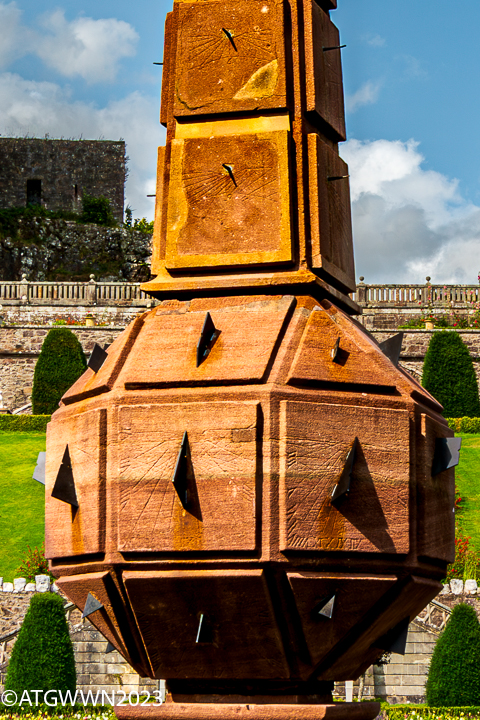
I also learned (gardens seem to teach everything) that there were multiple ways of measuring time, again from the exhibit in the Castle Keep,
“On the dials of the Drummond obelisk were carved and painted colored sets of lines, each color indicating a different way of measuring time. These lines represent common hours – hours equal in length from zero at midnight to 12 midday, followed by another 12 equal hours,” like today’s clock.
“Babylonian hours – equal hours, counting from zero at sunrise, which may run up to 14 or more with the later summer sunset.”
“Italian hours, equal hours counting up to 24 from zero at sunset the previous evening”.
“Judean hours – hours on a sundial dividing the day into 12 equal parts, from zero at sunrise to 12 at sunset. Hours vary in length with the changing seasonal day.”
“To show the time of the year, zodiac lines indicate declination (referring to the height of the sun). Azimuth circles are also shown.” Azimuth is the direction of the celestial object from the point of the observer.
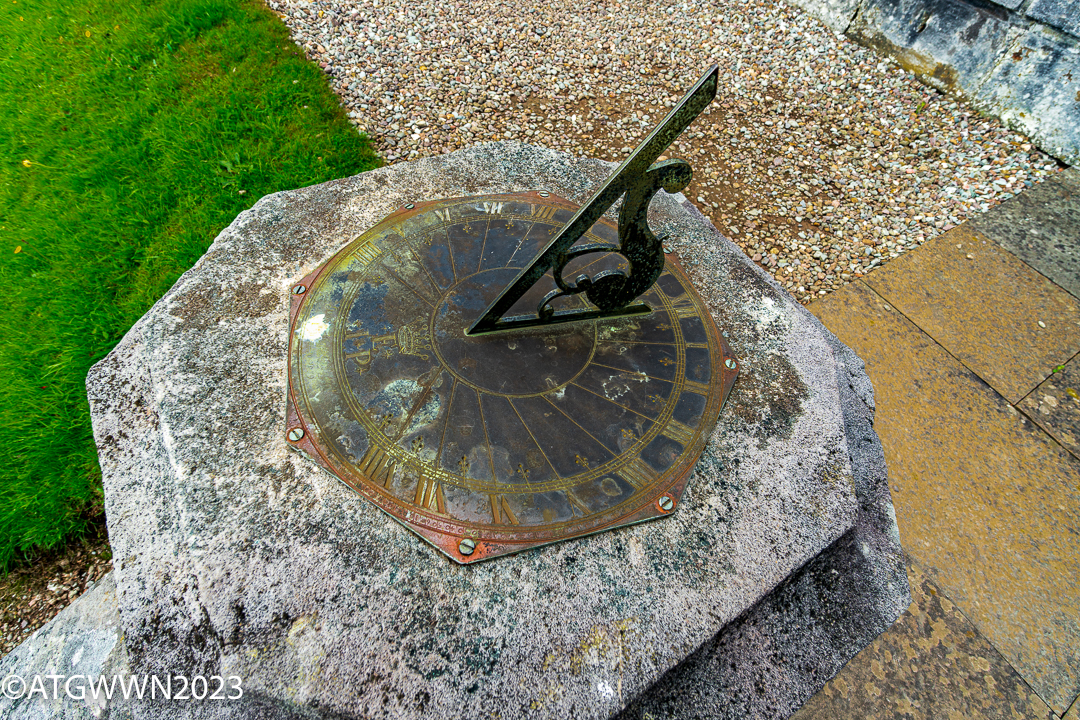
The original finish painting included hour numbers and zodiac signs. The designations were also in color coding. The coloring has faded perhaps just as sundials importance has faded away for us.
“The inscription on the north side of the lower shaft is a panel with an inscription in Latin, the common language of scholars at the time, which explains what the colors represented. It is a written explanation of the color coating for all the lines on all the dials on the obelisk.”
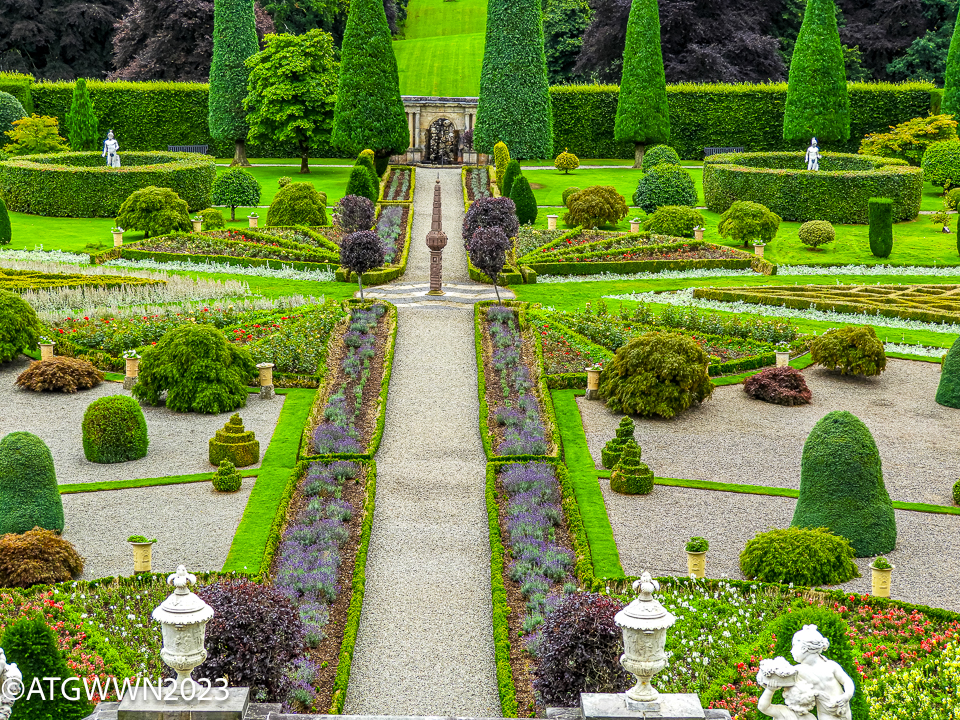
Today we argue about daylight savings time, adjusting the clocks by one hour. Imagine the public controversy when there were so many other ways to count the hours of the day. Though perhaps people didn’t know what others were counting, at least until they missed lunch! I have been fascinated by sundials in other gardens. Gardens expect hours of sun, and sundials were once an essential feature. Today, sundials are a decorative element in most situations. In its time, this sundial was an engineering marvel and is still remarkable today.
This is a story of the history of time, not the history we usually study that takes place over time.
*All quoted content is from the Sundial History Exhibition in the Drummond Castle Keep
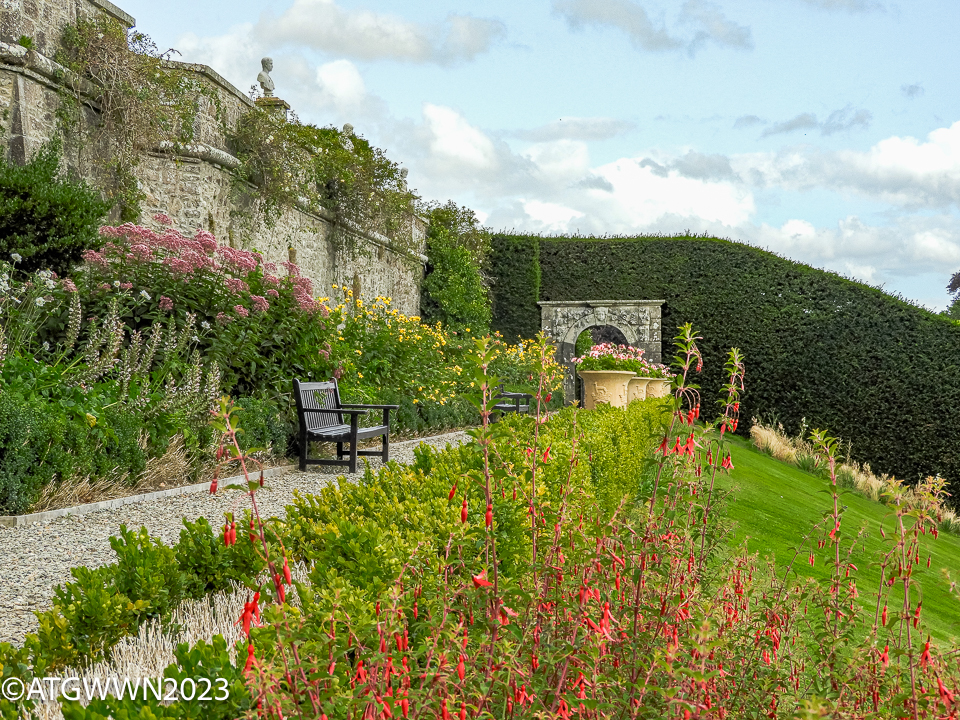

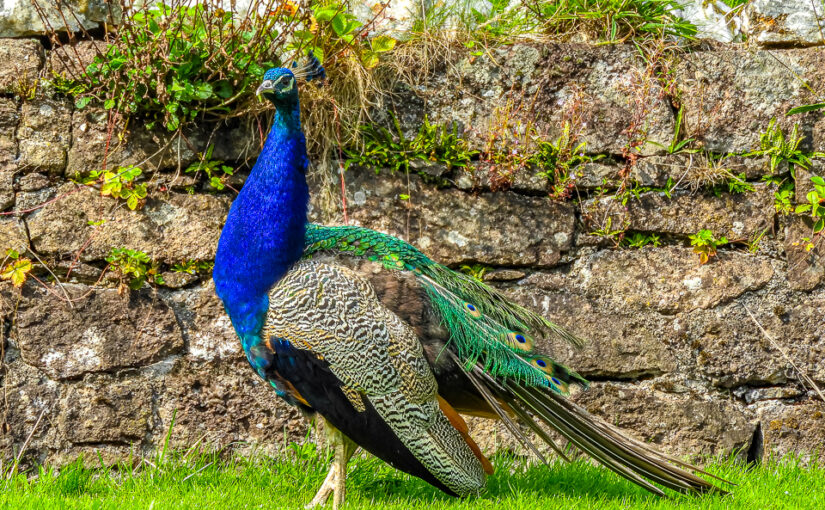
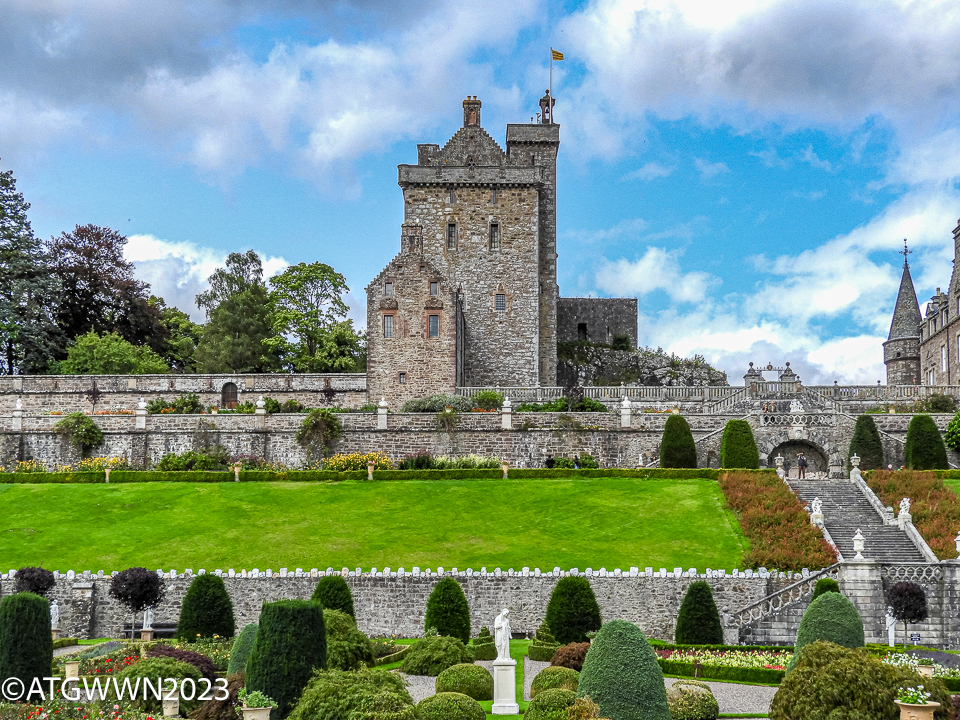
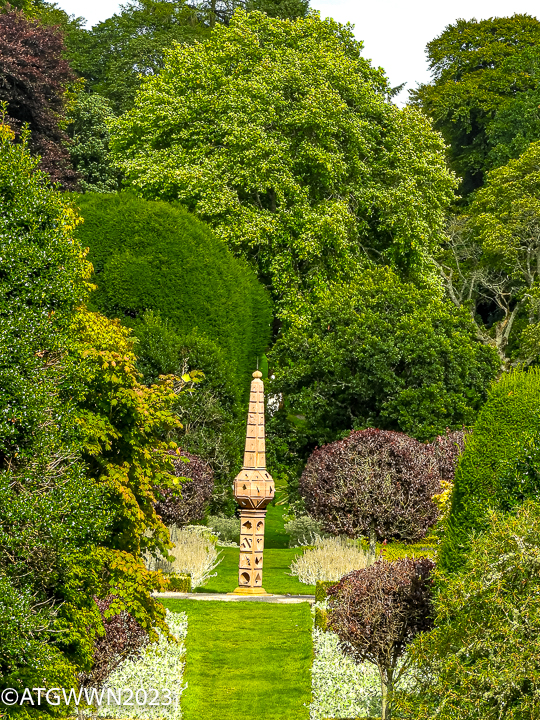
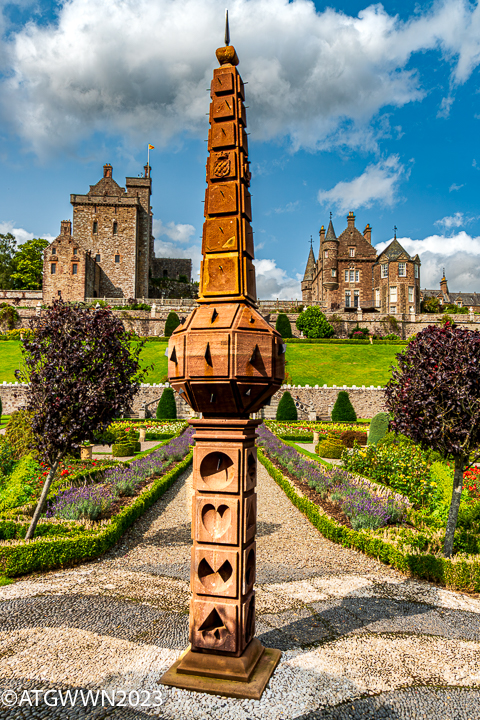
The garden was, indeed, stunning but so were your photographs and descriptions. You made me feel as if I’d already visited! But the next time we go to Scotland. . . .
Love, Sherry
It seems like a wonderful day. Your writing and pictures are taking me there! Like so many of the places you’ve shared. Thank you dear friends!
Such beautiful pictures and descriptions!
Thanks, Linda! Beautiful and stunning photographs>
Wow! So much to see and experience from a variety of perspectives! Beautiful photos and wonderful descriptions and background. There were several photos that would motivate travel there to experience it in person
Thanks for taking us there online in the meantime
Betsy
What a nice armchair adventure today! Thanks again Linda.
Awestruck by this garden and that sundial! Thanks for sharing